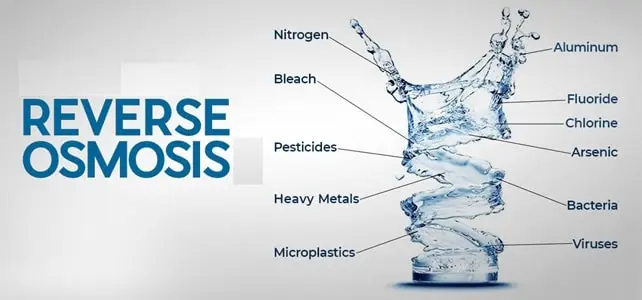Enhancing the quality of drinking water in your home has become a priority for many, leading to the rising popularity of reverse osmosis systems. These sophisticated devices are more than a simple filtration solution—they provide users with pure, clean water by removing an array of contaminants. From reducing unwanted tastes and odors to eliminating harmful pollutants, reverse osmosis offers a range of advantages for health-conscious consumers. Understanding the benefits and inner workings of this technology can lead to better decision-making when it comes to securing safe drinking water for your home. Below, we delve into the details of reverse osmosis and how it can contribute to your household’s well-being.
Understanding Reverse Osmosis and How it Works

Reverse osmosis is a filtration process that forces water through a semi-permeable membrane, trapping contaminants and allowing pure water to pass through. It effectively reduces a wide spectrum of impurities, including sediments, salts, bacteria, and heavy metals. The result is high-quality water that is especially beneficial for drinking and cooking.
This process begins when water pressure pushes the tap water through a pre-filter to remove larger particles like dirt and rust. Once the initial contaminants are out of the way, the water then traverses the reverse osmosis membrane. It’s designed to block particles that are larger than water molecules, which includes most pollutants and heavy metals.
After the water has passed through the membrane, it typically goes through a post-filter. Here, any remaining tastes and odors are removed. The simplicity of the process belies its effectiveness, making it a popular choice for those looking to improve their water quality.
Long-Term Cost Savings with a Home Reverse Osmosis System
Investing in a home reverse osmosis system might seem like a significant initial outlay, but it can result in considerable cost savings over time. By reducing reliance on bottled water, households can decrease plastic waste and the high cumulative cost of purchasing purified water. This environmental and economic efficiency promotes a sustainable and fiscally responsible way of life.
Maintenance costs for reverse osmosis systems are generally low. Filters and membranes do need replacement after certain usage, but the frequency is reasonable, and the costs are often lower than expected. With proper maintenance, an osmonics reverse osmosis system can last for many years, providing consistent savings throughout its lifecycle.
It’s also worth considering the associated health costs that may be avoided by using filtered water. Clean water can help prevent medical issues tied to water contaminants, further justifying the investment in a home reverse osmosis system.
Enhanced Water Purity and Safety Through Reverse Osmosis
Water sourced through a reverse osmosis water system is superior in purity and is considered safer than unfiltered tap water. By removing pollutants, such as heavy metals like lead and mercury, reverse osmosis helps reduce the risk of waterborne diseases and can be especially beneficial for people with weakened immune systems.
In addition to health benefits, the taste of reverse osmosis water is often preferred over tap water. The filtration process minimizes the presence of minerals that can alter taste, providing a more neutral-flavored water. This can be particularly appreciated when preparing coffee or tea, where the water’s purity can influence the beverage’s flavor profile.
Not all water contaminants are visible, and many can go unnoticed to the naked eye. Chemical impurities, including nitrates and sulfates, can be dissolved in water and undetectable without proper testing. These, too, are effectively removed by reverse osmosis, ensuring the water you consume is free from potentially harmful chemicals.
Reverse Osmosis Water Systems and Environmental Sustainability
One of the lesser-known benefits of reverse osmosis water systems is their contribution to environmental sustainability. By purifying tap water, these systems decrease the demand for plastic water bottles, significantly reducing plastic waste. With less plastic contributing to landfills and ocean pollution, users of reverse osmosis can take comfort in their positive environmental impact.
Furthermore, the improved water quality encourages homeowners to consume more tap water and less bottled beverages. This habit shift not only decreases the carbon footprint associated with transporting bottled water but also reduces the individual’s overall carbon consumption.
Another aspect of reverse osmosis water systems is water conservation. While older models may have been less efficient, newer systems have made strides in reducing water wastage. Thanks to technological advancements, modern reverse osmosis units are designed to be as water-efficient as possible.
Altogether, reverse osmosis offers an impressive array of benefits that extend well beyond merely providing clean drinking water. Its impact on health and wellness, financial savings, environmental sustainability, and overall convenience make it a highly valuable addition to any home. Embracing this technology ensures that you and your family will enjoy safe and pure water for years to come.
Santosh Kumar is a Professional SEO and Blogger, With the help of this blog he is trying to share top 10 lists, facts, entertainment news from India and all around the world.
